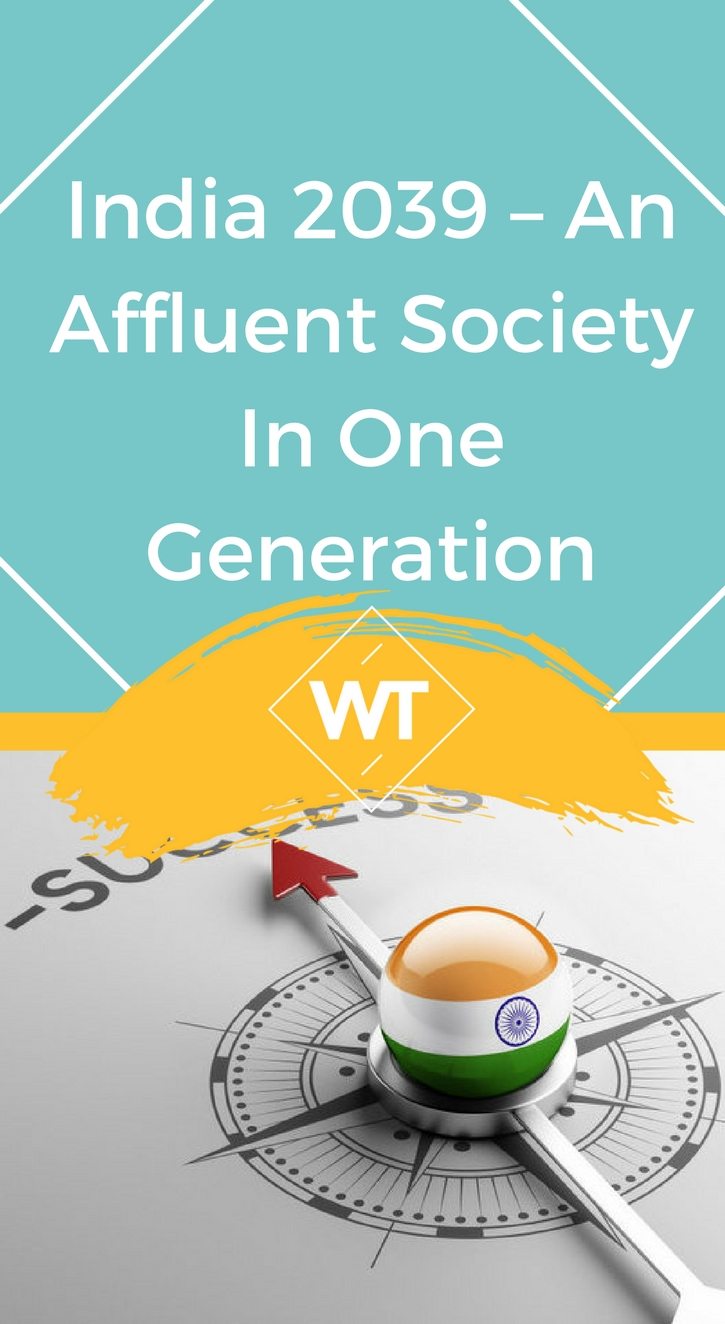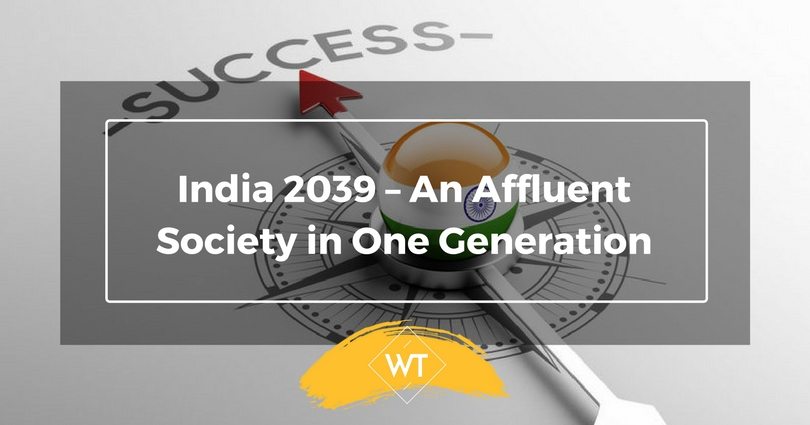India 2039 – An Affluent Society in One Generation

Centennial group published a report in 2009 on India titled “India 2039 – An affluent society in one generation”. This report highlights India’s long term growth potential dubbed India’s Promise. India in 1970s was classified as one of the world’s poorest countries. Recently India has been classified as lower middle income country and as per this report India will be classified as an advanced (affluent) country in 30 years.
The report presents India’s promise as a determined marathon runner with steady progress rather than a sporadic sprint. India could potentially become the second largest economy by 2039 next only to China and even surpassing United States.
Highlights of the Report
- 2039 would have a world very different from the one we see today. It would be significantly wealthier
- The economic centre of gravity would shift to Asia, which today accounts for 21 percent of global activity, but by 2039 could account for more than half. The giant economies of China, India and Japan would revive Asia’s economy.
- India’s long term growth prospects will depend on its ability to balance these three dimensions – society, economy and world – moving from a small player to a responsible global citizen
- India could accelerate its GDP growth over the next 30 years to 9.5 percent a year. At this rate the India economy would increase by a factor of 19 from 2009 to reach $20 trillion
Report – Presumptions
- The world is in the midst of restructuring and Asia’s economic weigtht is growing larger
- Economic recovery will kickstart by 2010 after the financial turmoil of 2008
- Many middle income economies have difficulty in advancing due to deficieny in policies and strategies
In other words India can be affluent only if it can avoid the “middle income” trap faced by many countries.
The middle income trap refers to countries which are stagnating and not able to get to the next level of classification (advanced countries). Countries like Brazil, and South Africa have experienced this trap while South Korea has managed to avoid this trap as shown in the chart below.
So if India were to follow South Korea’s pattern, then to meet its promise in 2039 – India will have to achieve the social indicators of South Korea today as in the chart below. The charts are courtesy of the report.

Is this achievable? Its open for discussion









Leave a Reply